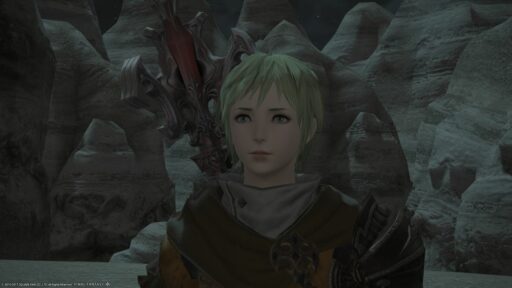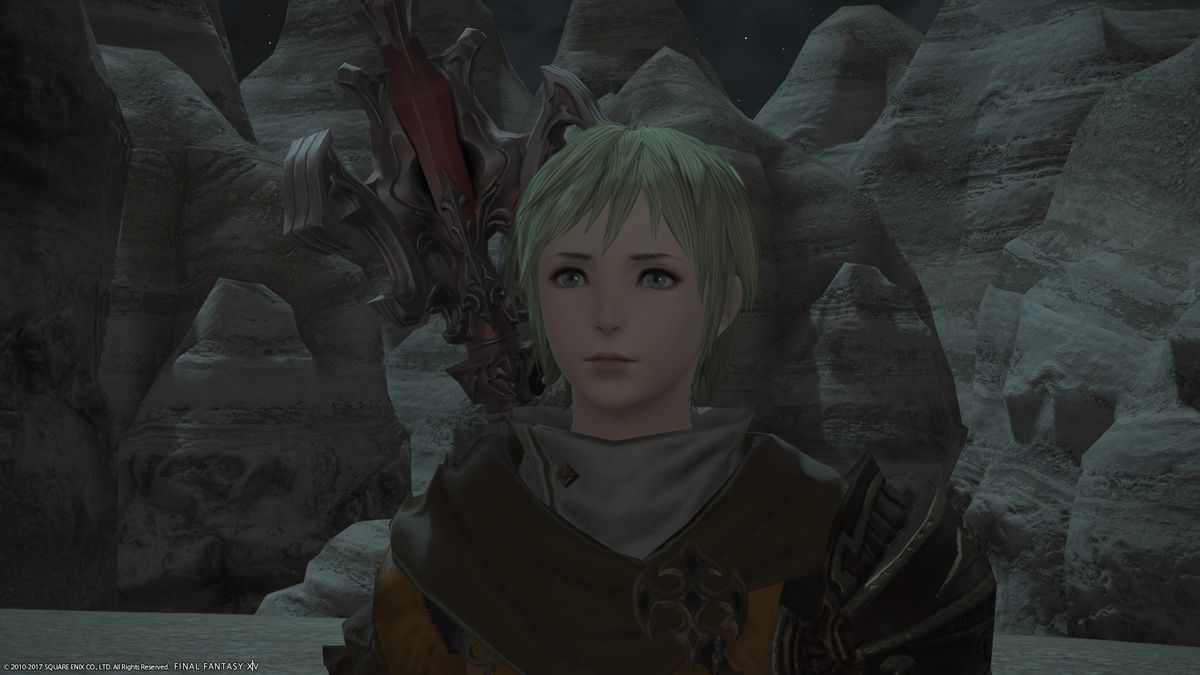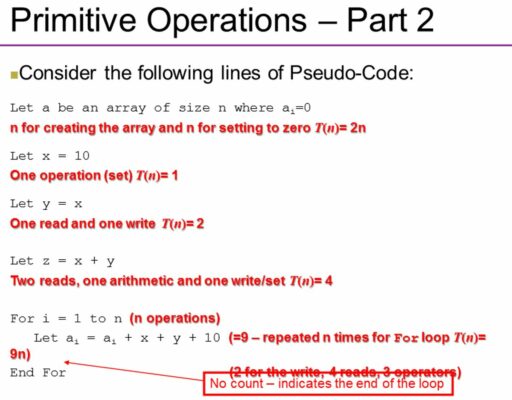Table of Contents
Final Fantasy XIV (FFXIV) has evolved significantly over the years, with changes in gameplay mechanics, narrative structure, and technological advancements shaping the player experience. Among these developments, the arrangement of data centers in this MMORPG has had a notable impact on gameplay. This article explores the various facets of FFXIV’s design and how the data center configuration influences the game, from player interaction to system performance.
Key Takeaways
- FFXIV’s data center arrangement is crucial for managing load and latency, directly affecting gameplay smoothness and player satisfaction.
- The evolution from turn-based to real-time combat and the integration of voice acting have dramatically changed the gameplay experience in the Final Fantasy series.
- Data centers facilitate community building, allowing players to form lasting relationships and participate in a shared game world.
- Graphical fidelity and world-building play a significant role in storytelling and atmosphere, with each Final Fantasy title pushing the boundaries of visual design.
- The narrative structure of FFXIV offers a balance between linear storytelling and player freedom, influencing dungeon design and the illusion of open-world exploration.
The Evolution of Final Fantasy’s Gameplay Mechanics

From Turn-Based to Real-Time Combat
The transition from turn-based to real-time combat in the Final Fantasy series marked a significant evolution in gameplay dynamics. Final Fantasy XI was a pivotal title, introducing a real-time battle system where characters’ actions are continuous, a stark contrast to the turn-based systems of its predecessors. This shift brought a new level of urgency and strategy to encounters, as players now had to react in real-time to the unfolding events of battle.
The Active Time Battle (ATB) system, first seen in Final Fantasy IV, served as a bridge between these two paradigms. It maintained the turn-based structure but added a time element that required players to make decisions swiftly to avoid enemy attacks. The series continued to refine this system, with Final Fantasy XII implementing the Active Dimension Battle system, further blurring the lines between turn-based strategy and real-time action.
The evolution of combat systems in Final Fantasy has always been about enhancing player engagement and providing a more immersive experience. The series’ willingness to innovate has kept gameplay fresh and exciting across its many installments.
The Integration of Voice Acting and Its Impact
The introduction of voice acting in Final Fantasy games marked a significant shift in the series’ approach to storytelling and character development. Voice acting brought characters to life, providing a new layer of emotional depth and enhancing player immersion. This transition mirrored a broader trend in the gaming industry, where the emulation of film-like narratives became more prevalent.
The impact of voice acting on player experience can be summarized in the following points:
- It allowed for more nuanced character expressions and reactions.
- Voice acting contributed to the dramatic weight of the story, making events feel more intimate and human.
- The shift from text-based to voice-based dialogue changed the way players engaged with the game, potentially affecting immersion based on individual preferences.
While some purists argue that dialogue boxes offer a unique charm by engaging the player’s imagination, the consensus is that voice acting has overall enriched the gaming experience. The puppet show aesthetic of earlier titles had its merits, but the move to voice acting has undeniably broadened the emotional palette of the series.
The implementation of voice acting also reflects the broader technological advancements in gaming, such as the use of more powerful hardware to render graphics and audio in real-time. This evolution has allowed for a more dynamic and cinematic presentation, aligning with the industry’s push towards hyper-realism and more sophisticated storytelling techniques.
Advancements in Camera Control and Environmental Interaction
The evolution of camera control in Final Fantasy XIV has significantly enhanced the player’s ability to interact with the game’s environment. Improved camera mechanics allow for a more immersive experience, as players can now seamlessly zoom, pan, and rotate to view the richly detailed world of Eorzea from multiple perspectives. This level of control is crucial in both combat and exploration, providing a strategic advantage and a deeper connection to the virtual landscape.
Environmental interaction has also seen substantial advancements. Players can engage with the world in more meaningful ways, from the manipulation of objects to triggering in-game events. The ability to interact with the environment adds layers of complexity to gameplay, making the world feel alive and responsive to the player’s actions.
- Enhanced camera flexibility
- Improved object manipulation
- Dynamic event triggering
The integration of these features has not only improved the visual storytelling but also the player’s sense of agency within the game. As the camera glides through the environment, the line between player and character blurs, creating a cohesive and engaging gaming experience.
The Significance of Data Center Arrangements in MMORPGs

Enhancing Player Experience through Server Technology
The implementation of advanced server technology is pivotal in enhancing the player experience in MMORPGs like FFXIV. Dedicated servers play a crucial role in managing the influx of player traffic, ensuring security, and reducing loading times, which are essential for maintaining a seamless gaming environment.
- Traffic Management: Efficient handling of simultaneous player connections.
- Security: Robust protection against potential threats and exploits.
- Loading Times: Faster access to game content and smoother transitions.
By optimizing server infrastructure, developers can create a more responsive and engaging world for players, where the sense of community and cooperation is strengthened.
The choice of server technology and configuration can significantly impact gameplay. Players often seek guides on setting up their connections and choosing the right server plan to optimize their individual gaming experience. This attention to detail reflects the importance of server technology in the overall quality of an MMORPG.
Balancing Load and Latency for Optimal Performance
In the realm of MMORPGs like FFXIV, balancing server load and reducing latency are critical for ensuring a seamless gaming experience. Data center arrangements are meticulously designed to distribute the player base effectively, preventing any single server from becoming overwhelmed. This balance is not only technical but also geographical, as proximity to servers can significantly affect a player’s latency.
- Server Load Distribution: Ensures no single server is overburdened.
- Geographical Placement: Affects latency based on player’s location.
- Resource Allocation: Optimizes performance during peak hours.
By carefully managing these elements, developers can provide a stable and responsive environment that supports the dynamic nature of FFXIV’s gameplay.
The challenge lies in predicting player behavior and peak times, which requires a sophisticated understanding of the game’s community and usage patterns. Data centers must be agile, capable of scaling resources up or down as needed. This adaptability is key to maintaining an equilibrium between load and latency, thus fostering a vibrant and active community within each data center.
Community Building within Data Centers
The architecture of data centers in MMORPGs like FFXIV is pivotal for fostering a strong sense of community among players. Data centers serve as the backbone for social interactions, enabling players to form lasting friendships, guilds, and alliances. These virtual spaces are not just technical infrastructures but also social hubs where shared experiences and memories are created.
- Data centers facilitate regional communities, ensuring that players can connect with others in their area, reducing language barriers and ping times.
- They also host special in-game events that bring players together, creating a vibrant, active community.
- Cross-world visit systems within data centers allow for a seamless mingling of players, enhancing the social aspect of the game.
The strategic placement of data centers is crucial in maintaining a balanced load across servers, which directly impacts the quality of gameplay and player satisfaction.
The importance of data centers extends beyond mere connectivity; they are instrumental in shaping the culture and identity of the game’s community. By providing a stable and responsive gaming environment, data centers lay the groundwork for a rich, multiplayer experience that is both inclusive and engaging.
Graphical Fidelity and World-Building in Final Fantasy XVI

The Dichotomy of Cutscene and Gameplay Visuals
Final Fantasy XVI showcases a striking contrast between its cutscenes and gameplay visuals, a design choice that has been a hallmark of the series. The distinction between the high-fidelity cutscenes and the in-game graphics serves to enhance the narrative impact and player immersion. Cutscenes in Final Fantasy games are often celebrated for their cinematic quality, providing a visual feast that complements the storytelling.
While the gameplay graphics are designed to be functional and responsive to player actions, they also maintain a high level of detail and artistry. This balance ensures that players remain engaged not only during high-intensity combat but also while exploring the game’s rich environments. The following points highlight the key aspects of this visual dichotomy:
- Cutscenes: High-resolution, pre-rendered visuals that push the boundaries of current hardware capabilities.
- Gameplay: Real-time rendered graphics optimized for performance, maintaining a consistent and immersive experience.
The seamless transition between cutscenes and gameplay is a testament to the developers’ dedication to creating a cohesive and visually stunning gaming experience. The art styles may vary, but the commitment to quality remains unwavering across all visual elements of the game.
The Role of Graphics in Storytelling and Atmosphere
In the realm of Final Fantasy XVI, the graphics serve as a pivotal element in shaping the game’s storytelling and atmosphere. The game’s visual fidelity is not just about aesthetic appeal; it’s a narrative tool that enhances the emotional resonance of the story. For instance, the use of motion-capture and granular texturing contributes to a more immersive and believable world, where the tone and scale of the story are intimately connected.
The graphics also play a crucial role in conveying the mood of the game. Subtle facial animations and musical cues during magical events signal tone shifts, reinforcing the futuristic atmosphere or a dark, serious narrative. This interplay between visual cues and storytelling deepens the player’s engagement with the game’s world.
The integration of high-quality graphics with the game’s narrative structure and world-building efforts results in a more cohesive and impactful gaming experience.
Final Fantasy’s approach to graphics and technology has evolved to prioritize narrative coherence. While previous titles may not have shown permanent environmental changes due to in-game actions, FFXIV’s commitment to narrative through visuals represents a significant shift in design philosophy. The game’s graphics are not just a backdrop but a character in their own right, shaping the player’s perception and interaction with the game’s universe.
Comparative Analysis with Previous Final Fantasy Titles
When examining the graphical fidelity of Final Fantasy XVI, it’s essential to consider its predecessors. The series has evolved significantly from its 8-bit origins to the stunning 3D environments of today. Each title has pushed the boundaries of console capabilities, often becoming a benchmark for graphical excellence in gaming.
The following table highlights key graphical milestones in the series:
| Title | Release Year | Notable Graphical Feature |
|---|---|---|
| FF VII | 1997 | 3D character models |
| FF X | 2001 | Fully 3D environments |
| FF XIII | 2009 | High-definition graphics |
| FF XV | 2016 | Real-time graphics engine |
Final Fantasy XVI not only continues this legacy but also integrates advanced lighting and texture details that create a more immersive experience. The seamless transition between gameplay and cutscenes further blurs the line between player interaction and narrative exposition.
The dedication to graphical innovation is a testament to the series’ commitment to providing players with a visually captivating journey. This commitment has been a constant, even as gameplay mechanics and storylines have evolved over the years.
Narrative Structure and Player Freedom in FFXIV

The Impact of Linear Storytelling on Gameplay
In Final Fantasy XIV, the narrative’s linear progression is a defining feature that shapes the player’s journey. The balance between storytelling and gameplay is a delicate one, where the former often takes precedence, guiding players through a meticulously crafted experience. This approach has its advantages and disadvantages:
-
Advantages:
- Ensures a cohesive and well-paced narrative.
- Allows for deep character development and plot twists.
- Provides a clear direction and purpose for the player.
-
Disadvantages:
- Can limit player agency and freedom.
- May lead to a predictable gameplay structure.
- Potentially reduces replayability due to a set story path.
The emphasis on a story-driven journey in FFXIV ensures that every player experiences the grandeur and depth of its world, albeit along a predefined path. This focus on narrative over exploration or player-driven choices reflects a design philosophy where the story is not just a backdrop but the driving force of the game.
While some players relish the rich, cinematic storytelling that Final Fantasy is known for, others may find the linear approach restrictive. The game’s design often necessitates a certain sequence of events, which can sometimes overshadow the gameplay mechanics themselves. However, it is this very structure that has allowed Final Fantasy XIV to deliver memorable moments and a strong emotional impact, resonating with a vast audience and securing its place as a beloved title in the series.
Combat Focus and Character Development
In the realm of Eorzea, the intricate dance of combat is as much about the sharpness of the blade as it is about the growth of the character wielding it. Final Fantasy XIV stands out for its combat system that emphasizes both player skill and character progression. The game’s mechanics encourage players to master their chosen class while also exploring the depth of their character’s backstory and motivations.
- Players start with a basic set of skills that expand as they level up.
- Each class has a unique storyline that intertwines with the main narrative.
- Character development is not just about gaining levels, but also about making choices that reflect the player’s style and preferences.
The journey through FFXIV is one of personal and martial growth, where every battle is a step towards becoming a legend in your own right.
The balance between combat and character development is further highlighted by the game’s job system, which allows for a dynamic shift in combat roles and abilities. This flexibility ensures that players can adapt to various combat scenarios while still maintaining a sense of personal growth and accomplishment.
Dungeon Design and the Illusion of Open World Exploration
Final Fantasy XVI introduces dungeons that seamlessly blend with the narrative, creating an experience that feels less like traditional RPG dungeons and more like natural extensions of the world. The world and narrative design went out of its way to be immersive, with each location contributing to the story’s progression. For instance, the Ash continent of Waloed, once unlocked, presents a typical RPG dungeon experience, yet it’s the exception rather than the rule.
The visual cues in these spaces are meticulously crafted, guiding players through the game’s early stages with environmental storytelling. The contrast of light and shadow, the use of pre-rendered backgrounds, and the strategic placement of visual elements all serve to enhance the sense of immersion.
Final Fantasy XVI’s approach to dungeon design is a departure from the series’ past, where the line between world-building and gameplay is blurred. The game’s hyper-realistic proportions and the practical use of magic in everyday life bring the player closer to the game’s world than ever before. Below is a list of key features that distinguish FFXIV’s dungeon design:
- Seamless integration with the narrative
- Environmental storytelling through visual cues
- Limited traditional ‘dungeon’ experiences
- Immersive use of graphics and lighting
- Practical magic use that enhances world-building
The Future of Final Fantasy: Expectations and Innovations

Anticipated Developments in Gameplay and Technology
As the Final Fantasy series evolves, technological advancements are eagerly anticipated by its fanbase. The introduction of new gameplay mechanics and enhancements in graphics are not just about attracting newcomers, as suggested by the producer of Final Fantasy XIV, but also about enriching the experience for long-standing fans.
The seamless integration of cutting-edge technology with beloved gameplay elements is a cornerstone of the series’ progression.
With each new installment, expectations soar for features such as improved AI, more interactive environments, and deeper character customization options. Below is a list of potential technological developments that could shape the future of Final Fantasy gameplay:
- Advanced AI systems for more dynamic and responsive NPCs
- Enhanced physics engines for more realistic environmental interactions
- Greater emphasis on cloud gaming to facilitate cross-platform play
- Implementation of virtual reality elements to deepen immersion
Potential Shifts in Narrative and Design Philosophy
As the Final Fantasy series evolves, narrative and design philosophies are poised for transformation. The shift towards more immersive storytelling may see a departure from traditional fantasy tropes, embracing a nuanced relationship with mythology that resonates on a personal level. This could lead to narratives that are not merely allegorical but deeply rooted in the exploration of the unknown and what matters most to us as humans.
The design philosophy may also reflect a greater emphasis on emotional and psychological dynamics, furnished by dialogue and situations rather than literal visual cues. This approach can offer players a unique form of immersion, distinct from the film-like realism that modern games often pursue. The balance between player agency and character autonomy is crucial; too much focus on a single character can lead to a sense of isolation, while a firm boundary between the protagonist’s agency and the autonomy of others can enhance the realism and immersion of the game world.
- Embracing a personal relationship with mythology
- Balancing emotional storytelling with gameplay
- Enhancing player agency while maintaining character autonomy
The future of Final Fantasy may well lie in its ability to innovate while staying true to the core elements that have defined its success. The series has the potential to redefine what a narrative-focused game can be, offering new ways for players to engage with its worlds and characters.
Community Hopes and Predicted Trends for Upcoming Installments
As the Final Fantasy series continues to evolve, the community’s expectations and hopes for future installments are a blend of nostalgia and a desire for innovation. Fans are eager to see a return to classic storytelling elements, while also anticipating advancements in gameplay mechanics and technology.
- A deeper integration of choice-driven narratives
- Enhanced AI for more dynamic and challenging combat
- Continued improvements in graphics and world immersion
- Greater emphasis on cross-platform play
The community’s voice is clear: they want a game that honors the rich history of Final Fantasy while pushing the boundaries of what an RPG can be. The balance between tradition and innovation will be crucial for the series’ continued success.
The anticipation for the next Final Fantasy title is palpable, with fans speculating on every detail, from combat systems to character arcs. The developers’ ability to listen to the community and adapt to the changing gaming landscape will be key to meeting these high expectations.
Conclusion
The data center arrangement in Final Fantasy XIV (FFXIV) plays a pivotal role in shaping the gameplay experience. By analyzing the evolution of Final Fantasy titles, from the early days of pre-rendered backgrounds to the dynamic, real-time graphics of FFXIV, we see how technological advancements have influenced game design. FFXIV’s data centers not only facilitate a stable and responsive online environment but also enable a global community to interact seamlessly. The game’s focus on combat and narrative-driven content, coupled with the ability to build unique combat styles, is enhanced by the robust infrastructure provided by the data centers. While the game may be more linear than its predecessors, the strategic placement of servers ensures that players from different regions can enjoy a cohesive and immersive experience. Ultimately, the data center arrangement is a testament to Square Enix’s commitment to delivering a high-quality MMORPG that remains true to the Final Fantasy legacy while embracing the possibilities of modern gaming.
Frequently Asked Questions
How have gameplay mechanics evolved in Final Fantasy over the years?
Final Fantasy’s gameplay mechanics have evolved from turn-based combat to real-time combat, with significant improvements in camera control, environmental interaction, and the integration of voice acting, enhancing character development and storytelling.
What role do data center arrangements play in MMORPGs like FFXIV?
Data center arrangements in MMORPGs are crucial for enhancing player experience by optimizing server technology, balancing load and latency to ensure optimal performance, and fostering community building within data centers.
How does graphical fidelity contribute to world-building in Final Fantasy XVI?
Graphical fidelity in Final Fantasy XVI plays a key role in storytelling and atmosphere, with a dichotomy between cutscene and gameplay visuals that enhance the narrative structure and contribute to the immersive world-building.
What impact does linear storytelling have on gameplay in FFXIV?
Linear storytelling in FFXIV directs the gameplay experience, focusing on combat and character development while designing dungeons and exploration to maintain the illusion of an open world without compromising the narrative.
What are the expectations for the future of Final Fantasy in terms of gameplay and technology?
The future of Final Fantasy is anticipated to bring developments in gameplay mechanics and technology, with potential shifts in narrative and design philosophy influenced by community hopes and predicted trends for upcoming installments.
How does FFXIV’s data center arrangement impact gameplay?
FFXIV’s data center arrangement impacts gameplay by ensuring stable and responsive online interactions, facilitating community engagement, and providing a framework for large-scale content updates and cross-regional play.





